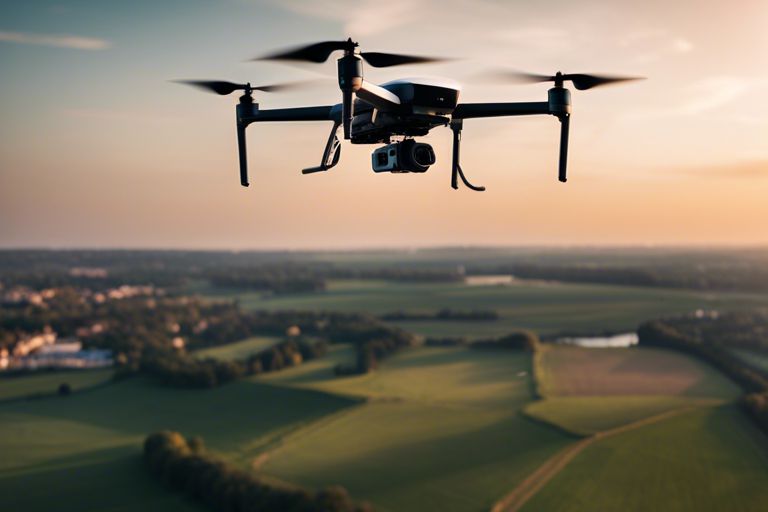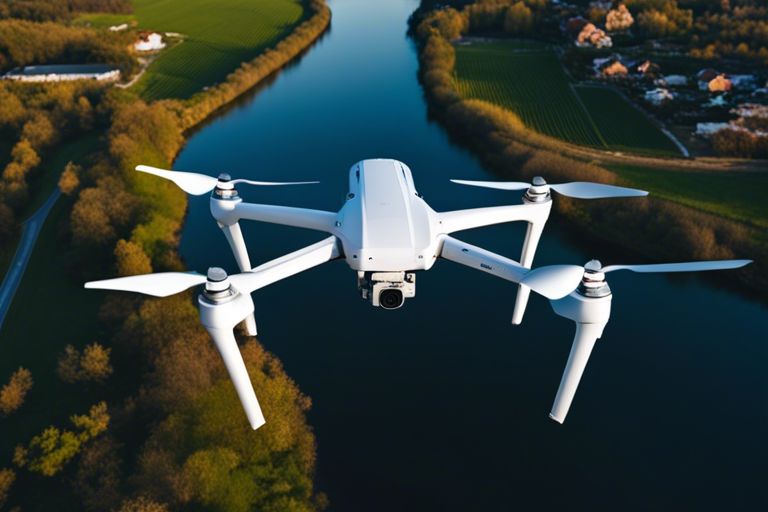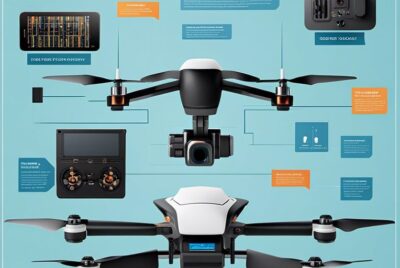“Beyond Visual Line of Sight (BVLOS) – Challenges and Opportunities”
Challenges and opportunities abound in the realm of Beyond Visual Line of Sight (BVLOS) operations in the aviation industry. As technology advances and regulations evolve, the potential for unmanned aircraft systems (UAS) to operate beyond the pilot’s line of sight is expanding. However, with this exciting potential comes a host of challenges that need to be addressed to ensure safe and efficient BVLOS operations. In this blog post, we will explore the key challenges facing BVLOS operations, as well as the opportunities that this technology presents for the future of aviation.
The Technical Challenges of BVLOS
Achieving safe and efficient Beyond Visual Line of Sight (BVLOS) operations poses several technical challenges that need to be addressed in the development of unmanned aircraft systems (UAS). These challenges are central to the integration of UAS into the national airspace and the success of their missions.
Communication Systems
The reliable and seamless exchange of data between the UAS and ground control stations is essential for BVLOS operations. The communication systems must provide real-time information on the status and location of the UAS, as well as facilitate command and control functions. Challenges in communication systems include ensuring robustness in varying environmental conditions, mitigating interference, and maintaining a secure link throughout the flight.
Sense-and-Avoid Technologies
One of the key technical challenges of BVLOS is the development and implementation of effective sense-and-avoid technologies. These systems enable UAS to detect and avoid obstacles, other aircraft, and airspace conflicts autonomously, without human intervention. The evolution of sense-and-avoid technologies is crucial for ensuring the safety and reliability of BVLOS operations.
Additionally, advancements in sensor technologies, artificial intelligence, and onboard processing capabilities play a significant role in enhancing the performance of sense-and-avoid systems. These technologies enable UAS to make intelligent decisions in real time, avoiding potential collisions and hazards in the airspace.

Regulatory Landscape for BVLOS
Clearly, the regulatory landscape for Beyond Visual Line of Sight (BVLOS) operations is crucial in ensuring the safety and efficiency of unmanned aerial systems (UAS) flying in airspace. Regulations play a vital role in defining the parameters within which BVLOS operations can take place, addressing concerns related to safety, privacy, and security.
Current BVLOS Regulations
To date, BVLOS operations for UAS are heavily regulated by aviation authorities worldwide. These regulations typically require UAS operators to maintain a direct visual line of sight with the aircraft during flight, limiting the distance and scope of operations. However, with advancements in technology and a growing demand for BVLOS capabilities, aviation authorities are gradually evolving their regulations to accommodate these changes.
Regulatory bodies such as the Federal Aviation Administration (FAA) in the United States and the European Union Aviation Safety Agency (EASA) have been actively working on developing standards and guidelines for BVLOS operations. These regulations often include requirements for operational procedures, safety measures, risk assessments, and communication protocols to ensure the safe integration of UAS into controlled airspace.
The Process of Gaining BVLOS Approval
Regulatory approval for BVLOS operations is a complex and meticulous process that involves demonstrating compliance with stringent safety standards and operational requirements. Operators seeking BVLOS approval must submit comprehensive documentation detailing their operational procedures, risk mitigation strategies, communication plans, and emergency protocols.
Regulatory authorities evaluate these submissions carefully to assess the feasibility and safety of the proposed BVLOS operations. Approval is granted only when operators can demonstrate a clear understanding of the risks involved and have put in place robust measures to mitigate them effectively. This stringent approval process is essential in ensuring the safe and responsible integration of BVLOS operations into the national airspace system.

Opportunities Offered by BVLOS Operations
Commercial Applications
One of the most promising opportunities offered by BVLOS operations is in the realm of commercial applications. Companies across various industries, such as agriculture, construction, and delivery services, are exploring the use of BVLOS drones for tasks that were previously limited by line-of-sight restrictions. These operations have the potential to increase efficiency, reduce costs, and improve overall productivity.
With BVLOS capabilities, drones can cover larger areas and access remote or hard-to-reach locations, allowing businesses to gather data, monitor assets, and perform tasks more effectively. This technology opens up new possibilities for innovative business models and services that were not feasible with traditional drone operations.
Advancements in Public Services and Safety
Services such as search and rescue operations, disaster response, and law enforcement can greatly benefit from the advancements in public services and safety facilitated by BVLOS operations. With the ability to deploy drones beyond visual line of sight, first responders can quickly assess situations, gather real-time information, and coordinate rescue efforts more efficiently.
BVLOS operations enable public safety agencies to enhance their capabilities in monitoring large areas, conducting surveillance, and gathering crucial data without risking human lives. By integrating BVLOS technology into their operations, these services can improve their response times and overall effectiveness in ensuring the safety and security of the public.
The integration of BVLOS operations in public services has the potential to revolutionize the way emergencies are managed and safety is ensured in various scenarios. From natural disasters to search missions, the use of drones with extended operational capabilities can make a significant difference in saving lives and protecting communities.
Future of BVLOS
Your ability to take advantage of BVLOS operations in the future will depend on various factors, including emerging technologies and trends in adoption and regulation.
Emerging Technologies
BVLOS operations are poised to benefit greatly from emerging technologies such as advanced detect-and-avoid systems, automated traffic management, and artificial intelligence algorithms. These technologies will enable drones to navigate complex environments safely and efficiently, opening up new possibilities for BVLOS applications across industries.
BVLOS capabilities will also be enhanced by advancements in satellite communications, 5G networks, and edge computing. These technologies will improve connectivity and data processing speed, further enabling drones to operate beyond the visual line of sight with increased reliability and precision.
Trends in BVLOS Adoption and Regulation
BVLOS adoption is expected to increase steadily as industries realize the benefits of expanded operational ranges and efficiencies. However, to ensure safe integration of BVLOS operations into the airspace, regulations will need to evolve accordingly. Authorities must develop frameworks that balance safety and innovation, promoting responsible BVLOS practices while accommodating technological advancements.
Trends: Regulatory bodies worldwide are working to establish standardized guidelines for BVLOS operations, focusing on key aspects such as safety management systems, pilot training requirements, and airspace integration procedures. These efforts aim to create a conducive environment for the growth of BVLOS technology while addressing safety concerns and ensuring compliance with existing aviation regulations.

Final Words
To wrap up, “Beyond Visual Line of Sight (BVLOS) – Challenges and Opportunities” probes into the complexities and potential of operating drones beyond the pilot’s direct line of sight. Despite the challenges such as regulatory hurdles, technological limitations, and safety concerns, there are vast opportunities awaiting industries willing to embrace BVLOS operations. By navigating through these obstacles and leveraging advancements in automation, artificial intelligence, and communication systems, organizations can harness the true potential of BVLOS to enhance efficiency, reduce costs, and revolutionize the way we approach various tasks. With careful planning, continuous innovation, and collaborative efforts, the future of BVLOS holds promise for diverse sectors such as agriculture, infrastructure inspection, and emergency response. Embracing the transition towards BVLOS will undoubtedly shape the future of drone operations and pave the way for unparalleled advancements in the field.



